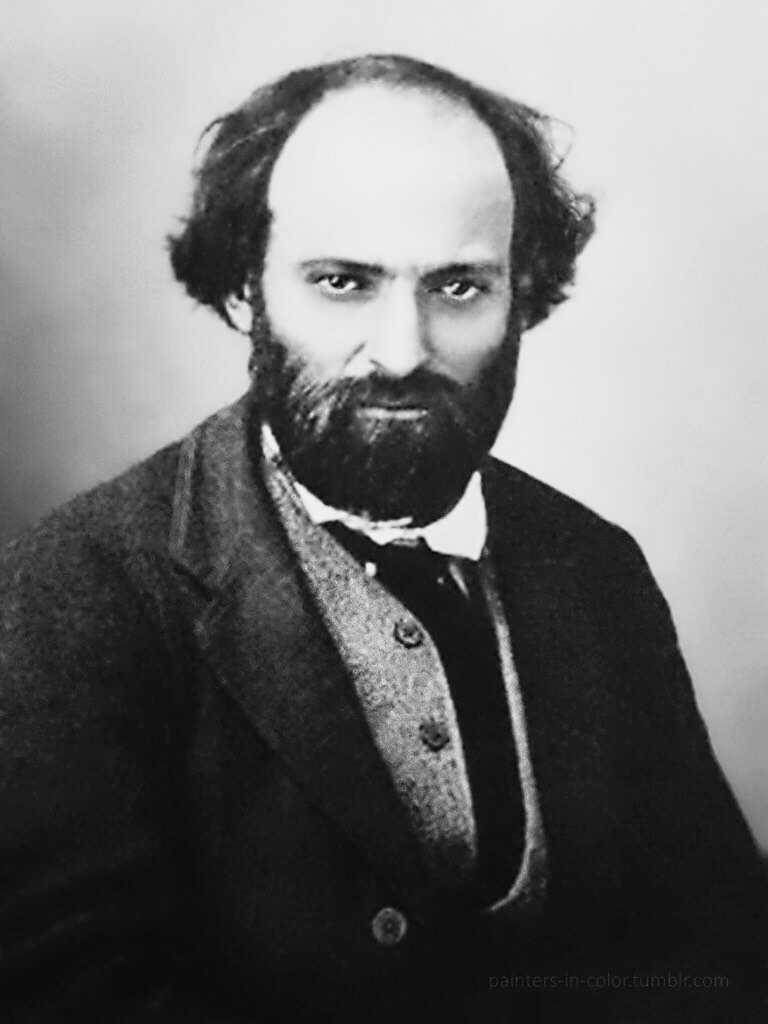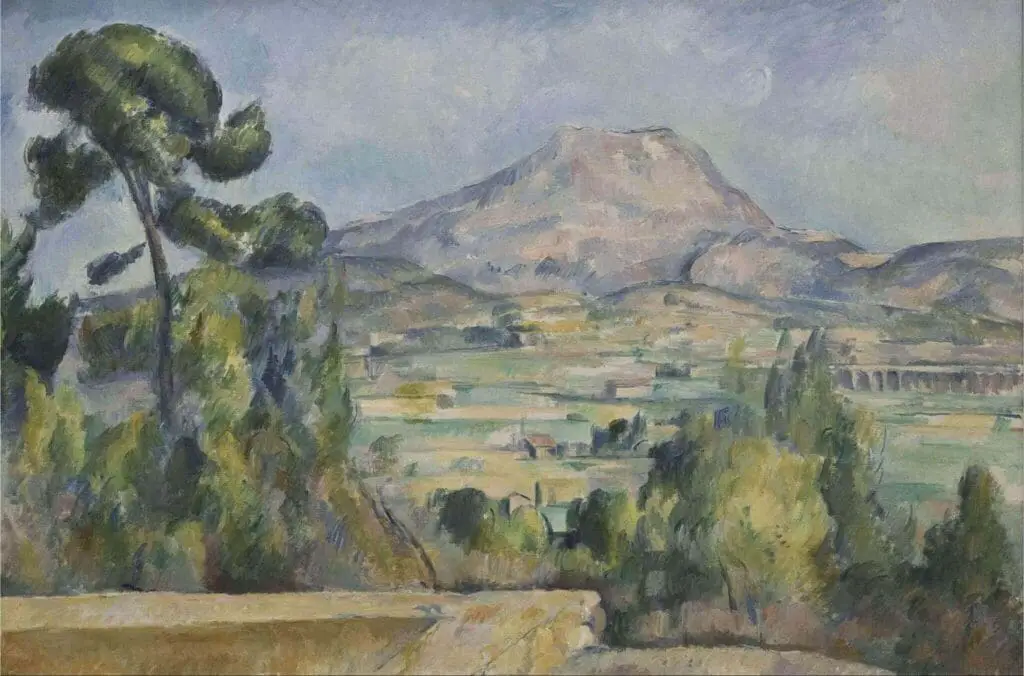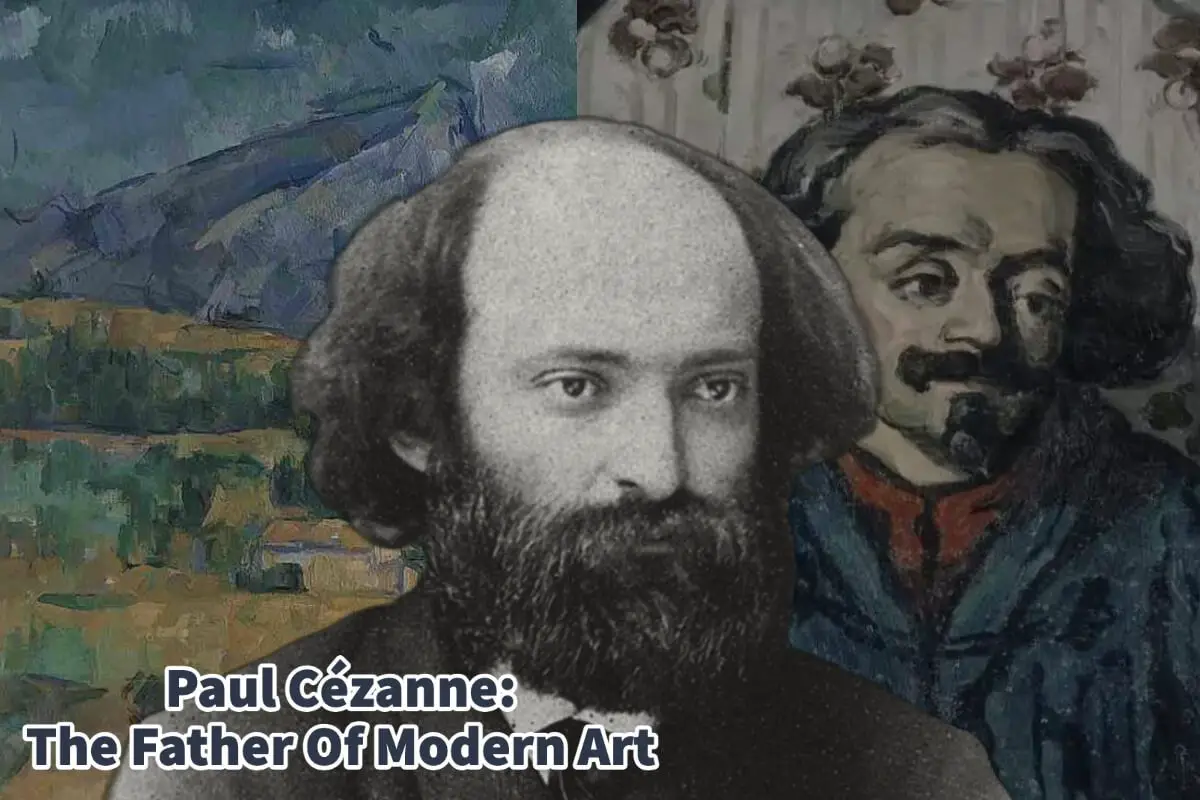When we journey through the annals of art history, specific names and their works echo through the centuries, leaving an indelible mark on our understanding of culture, expression, and aesthetics.
Among these luminaries is Paul Cézanne, a figure whose unparalleled contributions have led to his designation as the “father of modern art.” This title isn’t merely honorary—it represents Cézanne’s revolutionary approach to the canvas, encouraging artists to view the world and their mediums in an entirely new light.
Table of Contents
- Paul Cezanne – Post-Impressionism And Beyond
- Paul Cezanne And Exploring Color, Shape, And Space
- Paul Cezanne And His Influencing The Titans Of Modern Art
- Paul Cézanne: The Unique Late Bloomer Of Art
- Recognition In The Autumn Of Life – First One Man Show Age 50
- Related Questions
Paul Cezanne – Post-Impressionism And Beyond
To fully grasp the significance of Cézanne’s contributions, one must first understand the context in which he painted. Cézanne emerged during the Post-Impressionist movement, following the vibrant and emotionally charged era of Impressionism.

While Impressionists like Claude Monet captured fleeting moments and transient light, Post-Impressionists sought to explore emotional resonance, symbolic content, and structural elements.
This deeper dive allowed for broader artistic freedom. It was no longer about merely representing reality but interpreting and challenging it. Cézanne was at the forefront of this shift.
Paul Cezanne And Exploring Color, Shape, And Space
One of Cézanne’s most defining legacies is encouraging artists to engage with color, shape, and space in unconventional ways. Up to this point, traditional art primarily aimed to represent reality as it was, capturing accurate depictions of subjects. Cézanne’s brilliance lay in his ability to see beyond the mere representation.

He saw colors as tools to paint what he saw and as emotional and structural elements. Like the iconic “Mont Sainte-Victoire” series, his works showcase a vivid interplay of colors beyond realistic representation.

Shapes in his paintings, whether in his still life work or landscapes, aren’t always defined by sharp lines but are often suggested through color and brushwork. This approach pushes viewers to engage with the painting, filling in gaps with their interpretations.

Space, too, was rendered differently. Instead of a linear perspective that placed objects in neatly defined foregrounds and backgrounds, Cézanne played with spatial relationships, sometimes making them ambiguous. This invited viewers to rethink their perceptions of space and depth in art.
Paul Cezanne And His Influencing The Titans Of Modern Art
The ripples of Cézanne’s innovations can be seen in the works of subsequent art movements, notably Cubism. If one looks at the fragmented forms and abstracted planes in Picasso’s work, the influence of Cézanne’s treatment of shape and space is evident.
Picasso himself once said:
“Cézanne is the father of us all,”
Pablo PicassoOI
In this quote, Picasso acknowledged the profound impact Cézanne had on his artistry and the art of others. That is why he is considered to be the father of modern art.
Vanessa Bell, a central figure in the Bloomsbury Group, was influenced by the Post-Impressionists, including Cézanne. Her still-life paintings echo Cézanne’s emphasis on structure and form, even as she infuses her modernist sensibility.
Similarly, artists like Benode Behari Mukherjee, an Indian painter, took inspiration from Cézanne’s unique style. His art showcases the blending of traditional Indian motifs with the structural depth and modern sensibilities influenced by Cézanne.
Contemporary artists like Jane Simpson and Njideka Akunyili Crosby’s vision, while operating in vastly different contexts and mediums, owe a debt to Cézanne’s. Their still-life works—sculptural or mixed media—reflect a lineage of artistic exploration traced back to Cézanne’s innovations.
Paul Cézanne’s transformative approach to art is more than just a shift in technique or style. It represents a profound change in how artists perceive the world and their role in interpreting it. By challenging the norms of representation and pushing for emotional and structural exploration, Cézanne laid the groundwork for modern art as we know it.
His legacy as the ‘father of modern art’ is not only because of his unique style but also due to the freedom he bestowed upon the following generations of artists. He showed them—and us—that art can be free, unrestricted by conventions, and limited only by the artist’s imagination. In doing so, Cézanne redefined how we create and experience art.
Paul Cézanne: The Unique Late Bloomer Of Art
Despite his impact on modern art, Paul Cezanne was known to be a late bloomer when it came to art. It was not until later in life that he even became known.
The realm of art is rife with prodigies, those who showcase brilliance at a young age and rapidly ascend to fame. Yet, just as fascinating are the late bloomers, whose evolution is characterized by growth, metamorphosis, and eventual recognition.
Paul Cézanne, the revolutionary figure hailed for his undeniable contribution to modern art, belonged to this latter category. But what truly made Cézanne unique?
A Stark Contrast To His Contemporaries
Early in his career, Cézanne’s work differed from his contemporaries. While he did exhibit with the Impressionists, his canvases stood out, not necessarily for their mastery, but for their raw, unrefined approach.
The general populace and critics found placing his works within the prevailing paradigms challenging.
His art, especially during this period, was intense and visceral. With paintings rife with violence, morbidity, and eroticism, Cézanne’s treatment of subjects was far from subtle. His “Portrait of the Painter Achille Emperaire (1829-1898), c. 1868,” is a testament to this period of his artistry.

With heavy, thick layers of pigment, often applied aggressively with a palette knife, the texture of his pieces conveyed as much emotion as the subjects themselves.
Paul Cezanne Was An Misunderstood Genius
Given the stark contrast between his works and the prevailing artistic tendencies, it’s unsurprising that reactions to Cézanne’s early pieces were mixed, leaning toward negative.
Descriptions such as “a madman who paints in delirium tremens” hint at the bafflement and, at times, disdain with which his art was viewed. For many, his works were an enigma, a puzzle that defied the era’s norms.
A Turning Point: Pissarro’s Influence And Paul Cezanne
Camille Pissarro, a central figure in the Impressionist movement, recognized the potential in Cézanne’s raw energy. Taking the younger artist under his mentorship, Pissarro encouraged Cézanne to channel his passion in a more focused direction.
Under this guidance, Cézanne ventured outdoors, sketching from nature and harnessing his interpretations less aggressively.
This transformative relationship cannot be understated. Cézanne’s acknowledgment of Pissarro as not just a mentor but as his teacher underscores Pissarro’s profound influence on refining and redirecting his artistry.
Recognition In The Autumn Of Life – First One Man Show Age 50
Despite these shifts in approach, widespread recognition remained elusive for Cézanne. It wasn’t until 1895, when he was in his mid-50s that he had his first one-person exhibition. His style had evolved considerably from his youth’s raw, emotive canvases. His later works demonstrated mastery over form, color, and composition, qualities that would lay the foundations for modern art.
Cézanne’s journey stands as a testament to the evolving nature of artistry. His initial raw, unbridled passion, though misunderstood, was a clear indicator of a restless spirit seeking expression. The mentorship of Pissarro channeled this restless energy, allowing Cézanne to refine his vision without compromising his uniqueness.
In Cézanne, we witness the journey of a late bloomer who was unafraid to grow, change, and redefine himself, even when faced with criticism. His story reminds us that the path to greatness is not always linear and that genuine artistry often requires time, evolution, and the courage to remain faithful to oneself.
And yet, despite his late bloomer status, he is still known today as the father of Modern Art. Paul Cezanne’s influence is continued to be felt today in the artwork.
Anita Louise Art is dedicated to art education, great artists, and inspiring others to find and create their art. We love art that uplifts and inspires. #ArtToMakeYouSmile! #ArtToMakeYouHappy!
If you are interested to see any of my art, you can find out more by clicking here. If you are interested in what inspires me and my paintings, you can discover more by clicking here.
We have a free newsletter and would love you to be part of our community; you can subscribe to the newsletter by clicking here. I would be happy to talk to you if you have any questions. You can reach me, Anita, by clicking here.
Subscribe to our Anita Louise Art YouTube Channel filled with great videos and information by clicking here.
Join us for our podcast “5 Minutes With Art.” Spend 5 minutes a week with us to discover and learn about great art and artists. You can find out more about our podcast by clicking here.
Related Questions
Claude Monet And His Art Work
Claude Monet was one of the more prolific and consistent Impressionism painters. He believed in painting what was seen in nature and the changing light. He was an en Plein air painter. He is known for his strong and bold colors and short brush strokes.
You can discover more by reading Claude Monet And His Art Work by clicking here.
Similarities Between Claude Debussy And Claude Monet
Claude Debussy is a musical composer. Claude Monet is an artist. They are both considered Impressionists and were not afraid to break from the tradition of their day to create something new. Both Debussy and Monet greatly influenced many artists that went after them.
By clicking here, you can learn more by reading Similarities Of Claude Debussy And Claude Monet.
Why Is Van Gogh Considered Such A Great Artist?
Many things make Vincent Van Gogh unique and great as an artist. He had a great way of using color in his heart, but more than that, he was an artist who set and paved the way, and his brushstroke technique used color and his design ability. What is interesting is that he did this as a self-taught artist.
By clicking here, you can discover more by reading Why Is Van Gogh Considered Such a Great Artist?

